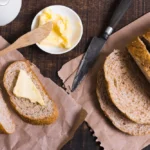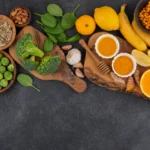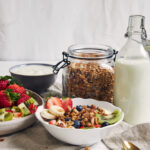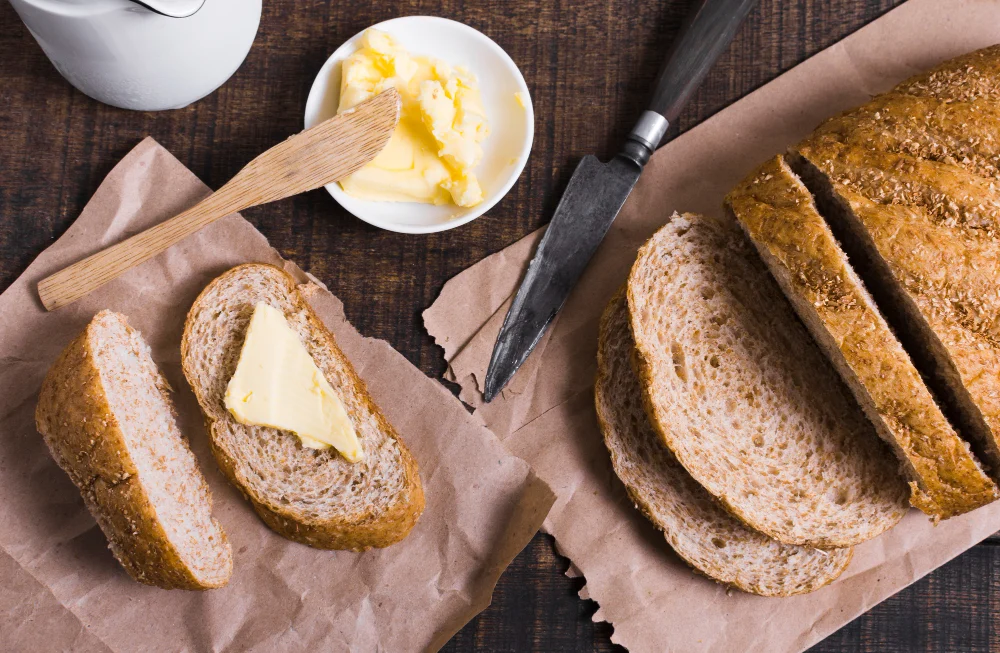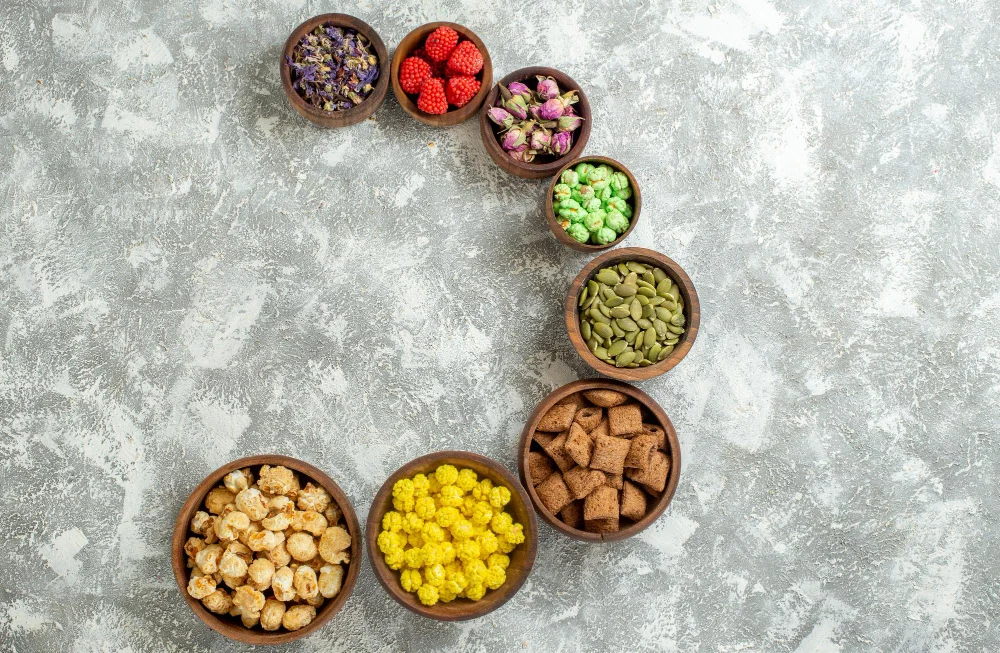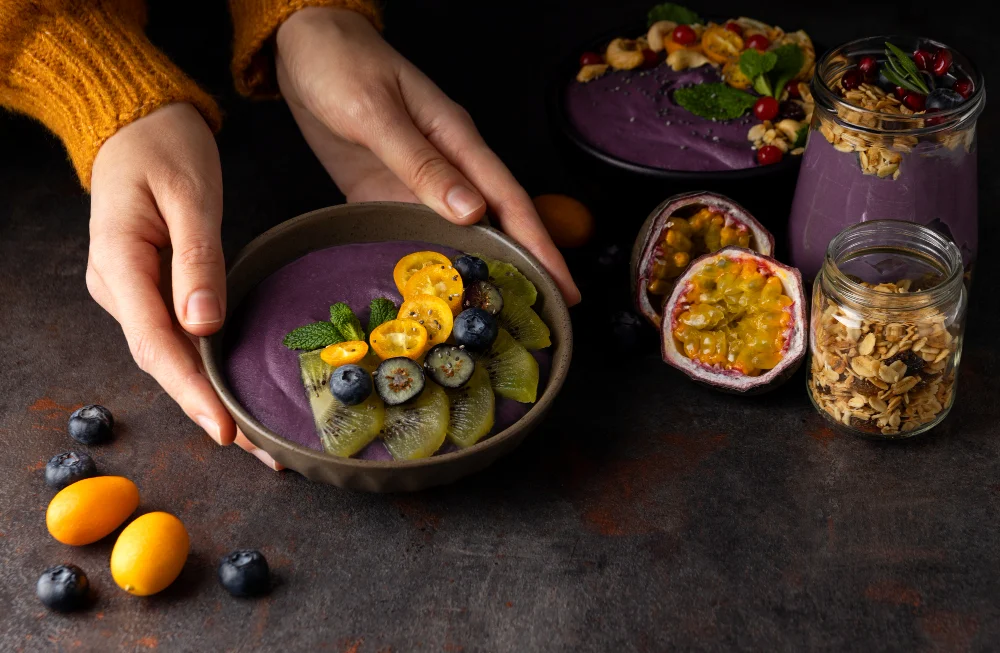The delightful world of baking – cakes, cookies, breads, pastries – often seems heavily reliant on traditional animal-derived ingredients like eggs, butter, and milk. For those embracing a vegan lifestyle, the question arises: how can we recreate beloved baked goods without compromising texture, flavour, or structure? The answer lies in understanding and mastering vegan baking substitutes. This guide provides a comprehensive exploration of common swaps for traditional ingredients, analyzing their nutritional impact, ethical underpinnings, the science behind their function, their environmental footprint, and most importantly, their practical application in your home kitchen, with tips relevant for bakers here in Jaipur and across India.
Mastering Vegan Baking: Best Vegan Baking Substitutes for Eggs & Dairy
LENS 1: Nutritional Analysis (Healthier Swaps?)

Swapping traditional ingredients for vegan alternatives often changes the nutritional profile of baked goods, sometimes for the better, but requires conscious choices.
- Replacing Eggs:
- Traditional Eggs: Provide protein, fat (including saturated fat and cholesterol), vitamins (like B12, D), and act as binders, leaveners, emulsifiers.
- Vegan Swaps:
- Flax/Chia Eggs: Add Omega-3 ALA fats and significant fiber; minimal protein; zero cholesterol.
- Fruit Purees (Applesauce, Banana): Add moisture, fiber, vitamins, natural sugars; reduce fat if replacing oil; zero cholesterol.
- Silken Tofu: Adds plant protein, some minerals; low fat; zero cholesterol.
- Aquafaba: Primarily water and some protein/carbs; negligible nutritional impact besides replacing egg whites.
- Commercial Replacers: Highly variable based on starch/gum ingredients; check labels.
- Replacing Dairy Milk:
- Traditional Milk: Provides protein, fat (variable), calcium, Vitamin D (if fortified), B12, natural sugars (lactose).
- Vegan Swaps (Fortification is Key!):
- Soy Milk: Highest protein, often fortified with Calcium/Vit D/B12.
- Oat Milk: Contains some fiber (beta-glucans), often fortified.
- Almond Milk: Lower calorie/protein, good source of Vit E, usually fortified.
- Coconut Milk (Beverage): Lower protein, higher fat (variable), adds flavour, often fortified.
- Replacing Dairy Butter:
- Traditional Butter: High in saturated fat and cholesterol; provides richness, flavour, structure.
- Vegan Swaps:
- Vegan Butter Blocks/Margarines: Aim to mimic function; fat profiles vary wildly (check for hydrogenated oils/trans fats, high saturated fat from coconut/palm oil); zero cholesterol.
- Coconut Oil: Very high in saturated fat; solid texture useful; distinct flavour; zero cholesterol.
- Liquid Oils (Sunflower, Canola, etc.): Primarily unsaturated fats; provide moisture but different texture; zero cholesterol.
- Fruit Purees/Avocado: Reduce fat significantly, add nutrients/fiber, alter texture (denser, cakier); zero cholesterol.
- Replacing Cream/Honey/Buttermilk: Similar shifts – swapping dairy fat/sugar for plant fats/alternative sugars (maple, date, jaggery – still sugars but may contain trace minerals). Eliminates cholesterol.
- Overall: Vegan swaps eliminate dietary cholesterol entirely. Saturated fat content depends heavily on the chosen substitute (coconut oil/some vegan butters can be high). Fiber content often increases (flax/chia eggs, fruit purees, whole grain flours). Fortification of plant milks is crucial for matching Calcium/Vit D/B12 levels. When choosing a substitute, how do you balance achieving the desired baking result with nutritional considerations?
Nutritional Deep Dive: Comparing Plant Milks for Baking
- Soy Milk: Closest nutritionally to dairy milk in protein content. Good all-purpose choice, fairly neutral flavour. Often well-fortified.
- Oat Milk: Naturally slightly sweet, creamy texture. Contains beta-glucan fiber. Good for moist results. Often fortified.
- Almond Milk: Lighter, lower in calories and protein. Generally neutral flavour. Good for delicate cakes where richness isn’t key. Check fortification levels.
- Cashew Milk: Creamy texture, fairly neutral. Lower in protein than soy. Often fortified.
- Coconut Milk (Beverage type): Distinct flavour, lower protein, fat content varies. Good when coconut flavour is desired. Ensure it’s the beverage type, not canned full-fat, unless recipe specifies.
Voice of Experience (Plant-Based Nutritionist): “Vegan baking substitutions often lead to positive nutritional shifts – eliminating cholesterol, potentially reducing saturated fat depending on the swap, and frequently increasing fiber. However, it’s vital to choose fortified plant milks to ensure adequate calcium and vitamin D, and remember that treats are still treats – enjoy mindfully, even when made with ‘healthier’ swaps like fruit puree.” – Dr. Riya Sharma, PhD, RDN
LENS 2: Ethical Framework (Compassionate Choices)

The very act of seeking vegan baking substitutes is rooted in ethics – the desire to create delicious food without animal exploitation.
- Core Principle: Replacing eggs, dairy (milk, butter, cream), honey, and sometimes gelatin directly addresses ethical concerns about animal welfare in industrial farming systems. Each successful vegan bake is a testament to compassionate living.
- Conscious Sourcing of Substitutes: Ethical considerations extend to the substitutes themselves:
- Sweeteners: Opt for Fair Trade certified sugar (ensuring no bone char processing), maple syrup, or jaggery (gur) from known sources. Honey is avoided due to bee exploitation concerns.
- Chocolate/Cocoa: Choose Fair Trade certified brands to combat unethical labour practices. Ensure dairy-free.
- Fats: Be mindful of palm oil sources in vegan butters/margarines (look for RSPO certified sustainable) or choose alternatives like coconut oil (consider its sourcing) or other plant oils.
- Nuts/Fruits: Consider Fair Trade nuts (especially cashews) or sourcing local fruits (like mangoes or bananas readily available in Rajasthan) for purees.
- Avoiding Hidden Animal Products: Be vigilant – some sugars, sprinkles, food colourings, or even certain shortenings might contain hidden animal derivatives. Checking labels or choosing certified vegan products ensures ethical consistency.
- Creativity as Compassion: The process of finding innovative ways to replicate traditional textures and flavours using only plants is a form of creative problem-solving driven by compassion. Sharing these creations further spreads the message. Beyond avoiding eggs/dairy, how does choosing ethically sourced substitutes like Fair Trade sugar deepen the ethical dimension of your baking?
Hidden Benefits: Aligning Pleasure with Principles
There’s a unique satisfaction in biting into a delicious cake or cookie knowing that its creation aligns completely with your ethical values. This can enhance the pleasure and remove any lingering discomfort sometimes associated with conventional indulgence.
Voice of Experience (Ethical Vegan Baker): “Finding the perfect vegan substitute feels like a small victory for compassion every time. Whether it’s nailing a meringue with aquafaba or getting a flaky crust with vegan butter, it proves that ethical choices don’t mean sacrificing joy or tradition. It’s about baking with kindness, from ingredients to final product.” – Anjali Verma, “Kind Crumbs” Bakery (hypothetical)
Critical Reassessment: The Imperfect Path
Striving for perfectly ethical sourcing for every single ingredient can be challenging and sometimes costly or inaccessible, especially outside major urban centres. It’s about making the best choices available and prioritizing key ingredients (like cocoa or sugar) where certifications make a significant difference, rather than letting perfectionism hinder the act of baking compassionately.
LENS 3: Ingredient Science & Environment (Function & Footprint)
Successful substitution relies on understanding what traditional ingredients do chemically and physically, and how plant-based alternatives replicate those functions, often with environmental benefits.
- Replicating Function:
- Eggs (Binder, Leavener, Emulsifier, Richness, Moisture):
- Flax/Chia Eggs: Mucilage forms a gel, providing excellent BINDING and MOISTURE.
- Fruit Purees (Banana, Applesauce): Provide MOISTURE and BINDING via pectin/starches.
- Aquafaba: Proteins denature and trap air when whipped, providing LEAVENING and structure like egg whites.
- Silken Tofu/Yogurt: Provide MOISTURE, RICHNESS, and some BINDING/EMULSIFICATION.
- Starches: Provide BINDING.
- Vinegar/Lemon + Baking Soda: Chemical LEAVENING boost.
- Dairy Milk (Moisture, Protein, Fat, Browning): Plant milks primarily provide MOISTURE. Soy milk’s higher protein aids structure and browning. Fattier milks add richness.
- Dairy Butter (Tenderness, Flakiness, Leavening via Creaming, Flavor): Vegan butter blocks mimic solid fat properties for FLAKINESS and CREAMING. Coconut oil offers SOLIDITY for shortbread/crusts. Liquid oils offer MOISTURE and TENDERNESS but not flakiness/creaming.
- Cream (Fat, Richness, Thickening, Whipping): Coconut/Cashew creams provide FAT/RICHNESS. Starches THICKEN. Aquafaba/commercial creams WHIP.
- Honey (Sweetness, Moisture, Browning, Flavor): Liquid sweeteners provide SWEETNESS and MOISTURE. Different sugars affect BROWNING.
- Gelatin (Gelling): Agar-agar forms strong GELS via seaweed polysaccharides.
- Eggs (Binder, Leavener, Emulsifier, Richness, Moisture):
- Environmental Footprint Comparison:
- Milk: Dairy milk production has significantly higher GHG emissions, land use, and water use than most plant milks (especially soy and oat; almond is water-intensive).
- Butter: Dairy butter has a very high environmental footprint. Vegan butters/oils generally have lower impacts, though palm/coconut oil sourcing needs consideration.
- Eggs: Industrial egg production has considerable environmental costs (feed, waste). Flax/chia seeds have very low footprints.
- Sweeteners: Cane sugar production has environmental impacts (water use, pesticides); local jaggery or maple syrup have different footprints. Honey production impacts bee populations and land use.
- Local/Seasonal Fruits: Using purees from local fruits (mangoes, bananas in India) as substitutes drastically reduces food miles. Which scientific function of eggs (binding, leavening, moisture) is most crucial in your favourite baking recipe, and which vegan substitute best replicates it?
Market Transformation Map Suggestion: Graph showing the rapid growth in the variety and sales volume of different plant-based milks (oat, soy, almond, cashew etc.) available in supermarkets globally and increasingly in India.
Voice of Experience (Food Scientist): “Vegan baking substitution is fascinating food science! We’re replacing egg proteins with plant proteins (aquafaba) or hydrocolloids (flax mucilage), dairy fats with plant fats having different melting points (coconut oil vs. vegan butter), and milk liquids/proteins with plant-based alternatives. Understanding these functional properties is key to predicting how a substitute will perform in a recipe.” – Dr. Priya Singh, Plant-Based Food Technology
LENS 4: Everyday Practitioner’s Experience (The Practical Swap Guide)
This is the ultimate hands-on guide to making vegan baking substitutes work in your kitchen, considering Indian availability.
The Substitute Toolkit:
- Eggs (Function Dependent):
- For Binding (Cookies, Muffins, Brownies):
- 1 Flax Egg: 1 tbsp ground flaxseed (alsi) + 3 tbsp water. Whisk, let sit 5-10 mins to gel.
- 1 Chia Egg: 1 tbsp chia seeds + 3 tbsp water. Whisk, let sit 10-15 mins to gel.
- 1/4 cup Fruit Puree: Mashed ripe banana, applesauce, pumpkin puree (kaddu). Adds moisture, may add flavour.
- 1/4 cup Silken Tofu (Blended): Adds moisture, richness, good for denser items.
- For Leavening/Lightness (Cakes, Meringues):
- Aquafaba: Liquid from canned chickpeas (unsalted best). 3 tbsp ≈ 1 egg white; 2 tbsp ≈ 1 whole egg (use primarily for binding). Whip like egg whites for meringues/mousse.
- Vinegar/Lemon Juice + Baking Soda: 1 tsp vinegar/lemon juice + 1/2 tsp baking soda (added separately to wet/dry ingredients) provides chemical lift.
- Commercial Egg Replacers: Follow package directions (brands vary, availability limited outside metros/online in India).
- For Binding (Cookies, Muffins, Brownies):
- Dairy Milk:
- 1 cup Plant Milk: Swap 1:1 with unsweetened soy, oat, almond, cashew, or coconut milk beverage. Soy/oat often best for general baking due to neutral flavour and good protein/body. Widely available in cities, less so rurally.
- Dairy Butter:
- 1 cup Vegan Butter Block: Swap 1:1 for recipes needing solid fat for creaming (cakes) or flakiness (pastry). Availability varies in India; check online/specialty stores.
- Coconut Oil: Use ~3/4 to 1 cup SOLID (chilled if needed) coconut oil for 1 cup butter in recipes needing solid fat (shortbread, some crusts). Use ~3/4 cup MELTED coconut oil or other liquid oil for 1 cup melted butter/oil in cakes/muffins. Adds coconut flavour (use refined for less flavour). Widely available.
- Liquid Oil (Sunflower, Groundnut, Canola): Use ~3/4 cup oil for 1 cup melted butter. Best for moist cakes/muffins where creaming/flakiness isn’t needed. Widely available.
- Fruit Puree/Avocado: Can replace some butter/oil for moisture and fat reduction (~1/2 cup puree for 1 cup butter), but significantly changes texture (denser, cakier).
- Buttermilk:
- 1 cup Vegan Buttermilk: 1 cup unsweetened plant milk + 1 tbsp lemon juice or apple cider vinegar. Let stand 5-10 mins to curdle slightly.
- Heavy Cream/Whipping Cream:
- Full-Fat Canned Coconut Cream: Chill can overnight, scoop out thick solid cream. Best for richness, whips somewhat (keep cold). Widely available.
- Cashew Cream: Blend 1 cup soaked raw cashews + ~1/2 cup water until very smooth. Rich, neutral base for creams/frostings. Cashews (kaju) available but can be pricey.
- Commercial Vegan Whipping Creams: Performance varies by brand; availability limited in India outside specialty stores/online.
- Honey:
- Swap 1:1 with maple syrup, agave nectar, date syrup, or liquid jaggery (gur – readily available in Rajasthan/India). Note flavour and slight moisture differences.
- Gelatin:
- Use Agar-Agar powder. Follow package instructions precisely for ratio and activation (needs boiling). Available online or in some specialty/Asian stores.
What common baking substitute (like flax seeds or coconut milk) is readily available in your local market in Jaipur?
Daily Impact: Quick Reference Substitution Chart
Create a small chart to keep in your kitchen listing common substitutes and ratios (Egg -> Flax Egg 1:3, Milk -> Plant Milk 1:1, Butter -> Vegan Butter 1:1 or Oil ~3:4, etc.).
Voice of Experience (Indian Vegan Home Baker): “For everyday baking here, flax eggs (alsi) are my saviour for cookies and cakes! And using readily available liquid jaggery (gur) instead of maple syrup works wonderfully in many recipes. For richness in kheer or frostings, thick coconut milk or blended cashews (kaju) are perfect, though kaju can be expensive.” – Mrs. Pooja Sharma, Jaipur
Alternative Approaches: Recipe Adaptation vs. Natively Vegan Recipes
Instead of directly substituting in non-vegan recipes (which sometimes requires tweaking), seek out recipes specifically developed to be vegan. These often leverage plant-based ingredients’ unique properties from the start for more reliable results, especially for beginners.
PERSPECTIVE INTERSECTION MATRIX
- Science & Practicality (Lens 3 & 4): Understanding why an egg binds or butter creates flakiness (Lens 3) informs the practical choice of the best vegan substitute for that specific function in a recipe (Lens 4).
- Nutrition & Choice (Lens 1 & 4): The nutritional differences between substitutes (e.g., flax egg vs. applesauce, coconut oil vs. other oils) (Lens 1) guide choices made by health-conscious bakers in practice (Lens 4).
- Ethics & Sourcing (Lens 2 & 4): Ethical concerns about ingredients like palm oil or cashews (Lens 2) influence which substitutes practitioners choose or seek out from responsible sources (Lens 4, 3).
- Environment & Availability (Lens 3 & 4): Choosing substitutes with lower environmental impact (like oat milk or local fruit purees) (Lens 3) depends on their practical availability and affordability for the home baker (Lens 4).
- Accessibility (All Lenses): The overall success relies on substitutes being nutritionally adequate (Lens 1), ethically sound (Lens 2), functionally effective (Lens 3), environmentally reasonable (Lens 3), and practically available/affordable (Lens 4).
MISCONCEPTION ANALYSIS
| Misconception | Reality |
| Vegan baking substitutes are complicated, artificial chemical concoctions. | Most common substitutes are simple, whole foods: ground flaxseed, chia seeds, fruit purees (banana, apple), plant milks, oils, vinegar, aquafaba (chickpea water!). Commercial replacers are usually starch/gum based. |
| Vegan substitutes don’t work as well; the texture/taste is always off. | When the correct substitute is chosen for the specific function needed (binding vs. leavening vs. moisture) and used properly, results can be indistinguishable or equally delicious. Poor results often stem from incorrect substitution. |
| Vegan baking is automatically healthier than traditional baking. | It can be (no cholesterol, often less saturated fat, more fiber), but vegan treats still typically contain significant sugar and fat. A vegan cookie is still a cookie! Health depends on the specific ingredients chosen. |
| Finding vegan baking substitutes is difficult and expensive in India. | Many core substitutes are Indian pantry staples! Flax seeds (alsi), fruits (banana, mango), coconut milk/oil, jaggery (gur), vinegar, baking soda/powder are widely available and affordable. Plant milks/vegan butters are increasingly available in cities/online. |
| You can just swap everything 1:1 without changing the recipe. | While milk is often 1:1, eggs and fats usually require specific ratios (e.g., 1/4 cup puree per egg, ~3/4 cup oil per cup butter) and understanding the substitute’s properties (e.g., oil adds moisture but not structure like butter). |
KEY TURNING POINTS
- Mainstreaming of Plant Milks: Wide availability of soy, almond, oat milk etc., made replacing dairy milk simple.
- Flax/Chia Egg Popularization: Online communities and blogs widely shared this simple, effective egg binding substitute.
- Aquafaba Discovery (c. 2014-15): Unlocked vegan meringues, macarons, mousses, revolutionizing delicate vegan baking.
- Improved Vegan Butters: Development of plant-based butter blocks that could be creamed and create flaky pastry, mimicking dairy butter function more closely.
- Vegan Baking Cookbooks & Resources: Proliferation of reliable recipes and guides explaining the science and application of substitutes.
SYNTHESIS & RECOMMENDATIONS
Unlocking the world of vegan baking hinges on understanding and effectively utilizing vegan baking substitutes. Replacing eggs, dairy, and other animal products is not just possible, it’s an opportunity for creativity and delicious results. By learning the function of traditional ingredients and choosing plant-based alternatives – like flax eggs for binding, plant milks for moisture, vegan butters or oils for richness, and aquafaba for lightness – home bakers can recreate almost any beloved recipe. Prioritizing accessible, affordable, and ethically sourced substitutes available locally (like many options in India) makes compassionate baking feasible. With a little knowledge and experimentation, you can confidently bake delicious vegan treats that satisfy every craving.
Recommendations for Using Vegan Substitutes:
- Understand the Function: Before swapping, identify the primary role of the non-vegan ingredient in the recipe (e.g., Is the egg mostly for binding or leavening?).
- Choose the Right Substitute: Select the vegan alternative that best mimics that specific function (see Lens 4 guide).
- Use Correct Ratios: Follow recommended substitution ratios (e.g., 1 flax egg per egg, ~3/4 cup oil per cup butter). Don’t assume 1:1 for everything except milk.
- Start with Vegan-Specific Recipes: Beginners often have more success with recipes already developed using vegan substitutes, rather than adapting complex traditional ones initially.
- Utilize Pantry Staples: Master common, accessible substitutes first (flax eggs, fruit purees, plant milk + vinegar, common oils) before seeking specialty items. Leverage local Indian staples like jaggery or coconut milk.
- Don’t Be Afraid to Experiment (Carefully): Once comfortable, try variations, but change only one substitute at a time to understand its effect.
- Check Labels: Ensure ingredients like sugar, chocolate chips, or sprinkles are indeed vegan.
- Manage Expectations: Vegan versions might have slightly different textures or flavours – embrace the unique deliciousness of plant-based baking!
FURTHER AREAS OF EXPLORATION
- A Detailed Chart of Vegan Egg Replacers and Their Best Uses
- Vegan Butter vs. Coconut Oil vs. Liquid Oil in Baking: When to Use What
- The Science and Magic of Aquafaba: A Complete Guide
- Naturally Sweetened Vegan Baking Using Dates, Fruits & Jaggery
- Gluten-Free and Vegan Baking Substitution Challenges
- Making Traditional Indian Sweets (Mithai) Vegan: Ingredient Swaps


